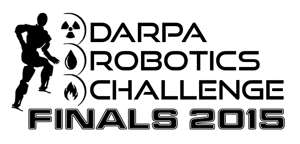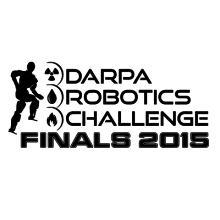
Robohub.org
DRC is not just about building robots; it’s about building community
![Team TRACLabs — at Homestead-Miami Speedway [photo: DARPA facebook page]](http://robohub.org/wp-content/uploads/2015/06/Team-TRACLabs-—-at-Homestead-Miami-Speedway.jpg)
Team TRACLabs — at Homestead-Miami Speedway [photo: DARPA facebook page]
Something remarkable is happening in Building 9 here at the Fairplex in Pomona, Calif. Imagine a long, giant warehouse-like building divided into 24 bays, within which people from around the world are unpacking their robots and preparing them for the DRC Finals. Imagine lids being pried off the tops of reinforced wooden crates, foam padding and stuffing peanuts being brushed aside, and then slowly—with the help of gantries and winches—metallic creatures rising from their shipping crypts like mummies exhumed not from the past but from a future.
That’s the technical part—the fork lifts, the tools, the LEDs blinking to life as members of this new generation of increasingly sure-footed emergency responders prepare for the difficulties that await them on the challenge course outside. But the even more remarkable part is the human half of this evolving experiment in human-robotic collaboration. Members of competing teams are visiting each other. They are sharing tips and even software. Yesterday, two teams in adjoining bays wanted to know if they could lower the eight-foot-tall privacy wall that separated them so they could work together better. In less than a day, a community has arisen.

That’s a great reminder that the DRC is not about robots going off to mitigate disasters on their own. It’s about honing the interface between humans and robots, so we can take best advantage of what each has to offer. Hundreds of people are coalescing around a common goal that demands the best of people and their machines. I could not be more inspired.
Now, as the momentum builds, it’s time for me to focus on the final details of the Finals event itself, so I will take a break from updating this page personally. But please check out DRC’s new blog page—Post Cards from DRC—which will be updated regularly over the next several days to immerse you in the excitement, the tension, the people … and yes, the robots of the DARPA Robotics Challenge.
If you liked this article, you may also be interested in:
- DARPA’s Robotics Challenge: A pocket-sized guide to the finals
- Beginner’s guide to the humanoid robot challenge (DRC)
- DARPA’s Virtual Robotics Challenge a practical step forward on the long road toward disaster-response capable humanoids
- DARPA’s legacy: Open source simulation for robotics development and testing
- DARPA’s Gill Pratt on Google’s robotics investments
- DARPA’s HAPTIX project hopes to provide prosthetic hands with sense of touch
See all the latest robotics news on Robohub, or sign up for our weekly newsletter.
tags: c-Events, cx-Military-Defense, DARPA, DRC




